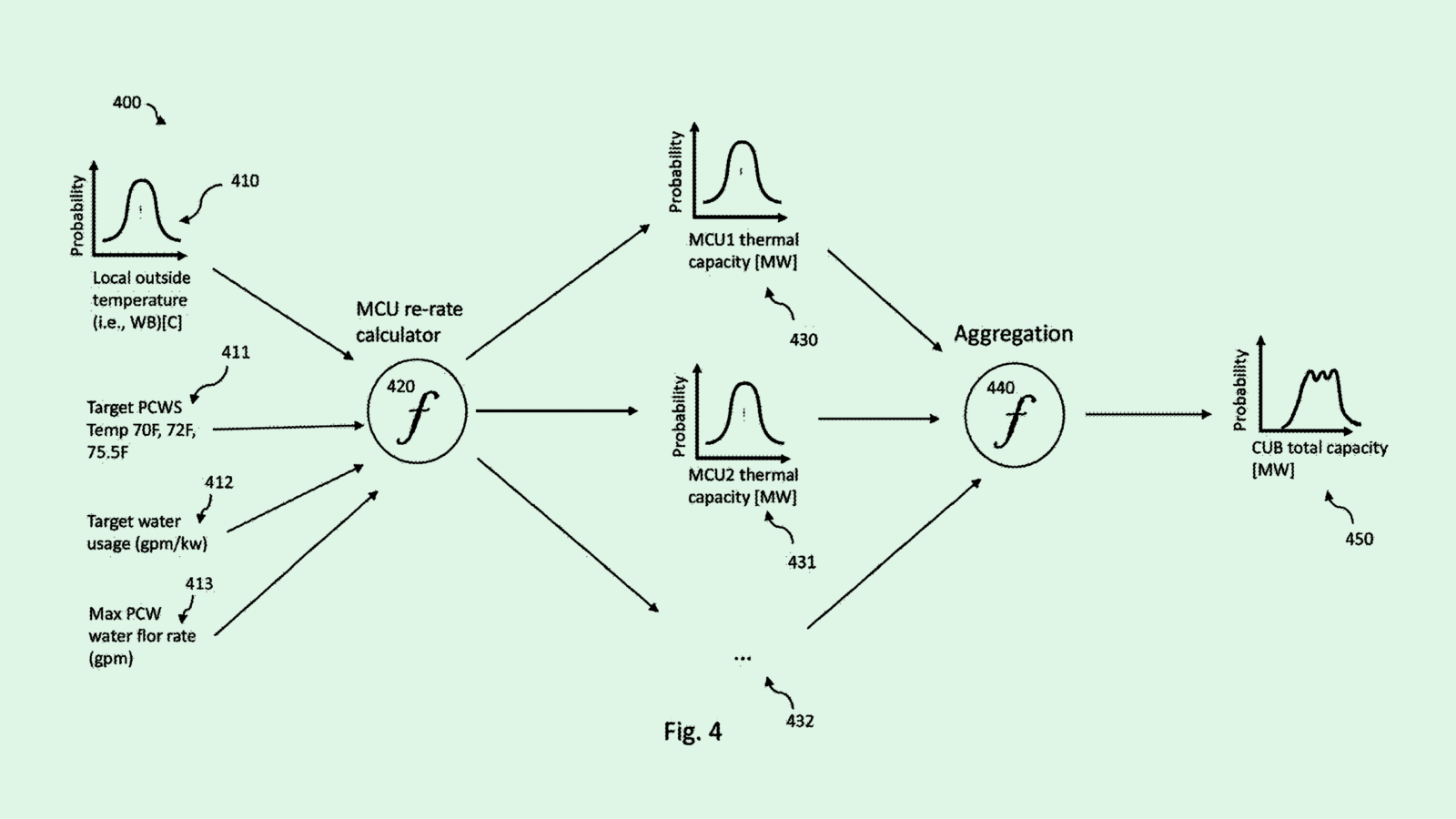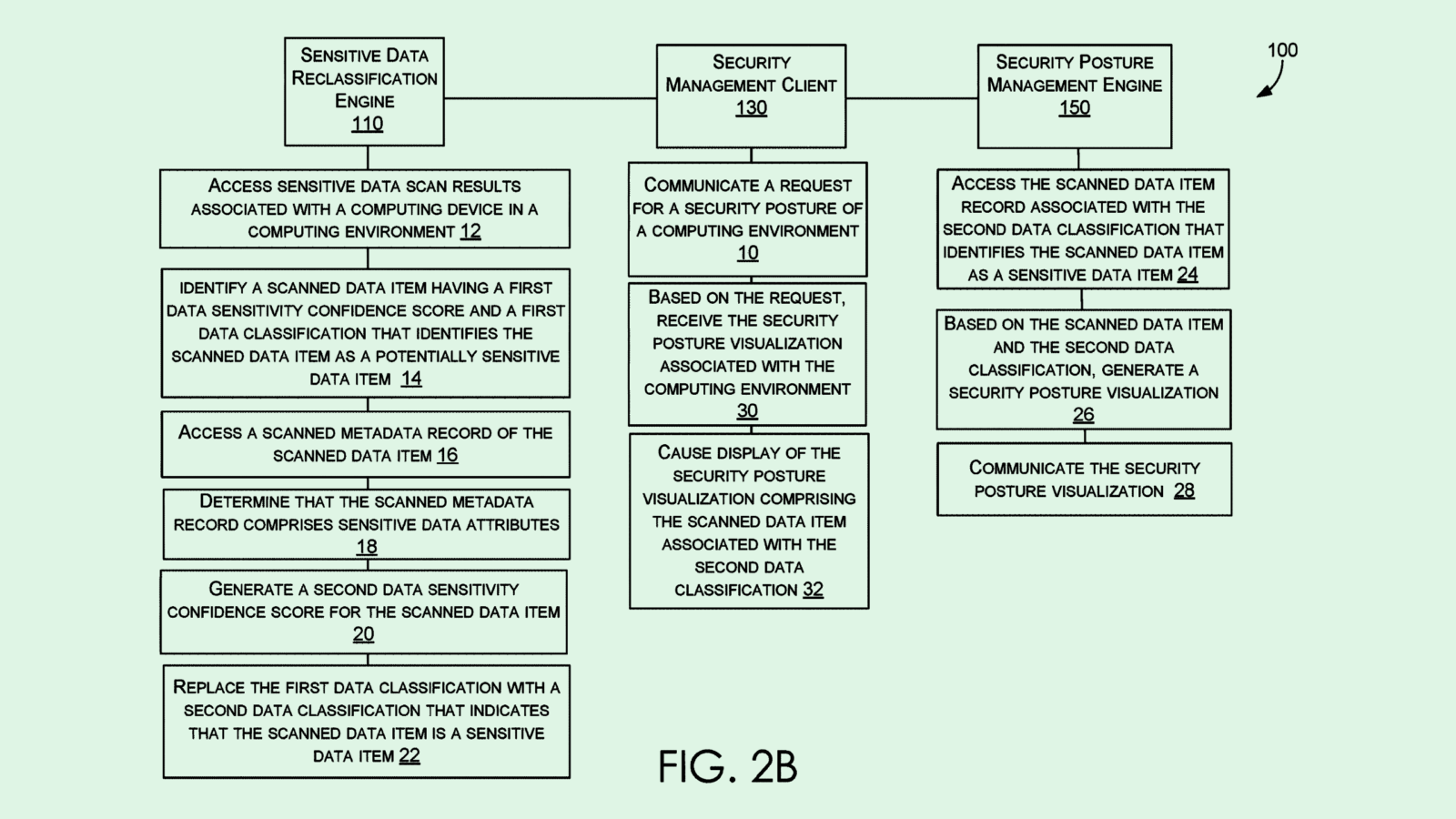Happy Monday and welcome to Patent Drop!
Today, a patent application for making Amazon’s voice assistants more personal highlights the race – and roadblocks – to creation of an AI-powered Alexa. Plus: Google cools data centers more efficiently; and Microsoft strengthens systems to keep sensitive data from the wrong hands.
But first, a quick programming note: Patent Drop is going to look a little different going forward. Stay tuned for more details in our Monday, Dec. 9 edition.
Let’s take a peek.
Amazon Learns Your Voice
Amazon wants to know who said what to Alexa.
The company is seeking to patent technology for “user recognition for speech processing systems” that would enable its digital assistant to identify exactly which user is giving it commands and provide more personalized responses.
While using multiple techniques to verify users, such as voice and facial recognition, may give a system higher confidence with identification, “such recognitions may add friction to the user’s interaction with the system and may be undesirable in certain circumstances,” Amazon said in the filing.
Amazon’s tech offers personalization without excessive identity verification, using just a user’s voice to unlock personal content if it matches only the “most stringent user recognition confidence threshold.” Meaning, if your Alexa isn’t entirely sure that you’re the one talking, your preferences are locked up.
“This may decrease [the] likelihood of undesirable operation of the speech processing system without increasing unintentional disclosure of data to unauthorized users,” Amazon said.
The system would take advantage of neural networks to detect and learn user voices then measure them against the confidence threshold each time a user speaks to their device. If the user does meet the threshold, Amazon’s tech may offer personalized responses, grant access to specific content such as music or recommendations, or enable secure purchases and transactions without additional authentication.

We’ve seen tech like this from Amazon before. The company has sought a number of patents to make its smart speakers more intuitive and personalized, including ways to recognize emotion and track environmental noises in users’ homes.
Patent applications like these make sense if Amazon wants to make these devices as useful as possible to owners, said Thomas Randall, advisory director at Info-Tech Research Group. With advanced machine learning, Alexa can recognize users’ habits and preferences, or provide additional security when interacting with minors, he noted. Doing so also embeds users more deeply into Amazon’s ecosystem of services, such as music, Prime Video and its e-commerce unit, he said.
“If it can differentiate between a household of different people, that’s something that can be very attractive,” Randall said. But unless the unit creates reliance on its services, it could “remain fairly flat for growth,” he added.
Patent applications like these feed into the company’s larger vision of giving Alexa an AI upgrade. The company has plans to embed Anthropic’s Claude generative language model into its devices. This adds to several partnerships and a series of investments in the startup, totalling $8 billion.
But Amazon has reportedly faced a number of roadblocks in getting its generative AI-powered assistant to market. According to Bloomberg, Amazon delayed a wider rollout of the tech until 2025. And Fortune reported that the system’s response times remain a major problem.
Working out the kinks could open the door for more than just consumer device revenue, said Randall. “It also might have an enterprise application in contact center solutions as well, where voice AI is becoming an important functionality,” he added.
Google Cools Down Data Centers
Data center cooling isn’t one-size-fits-all. Google may have a more individualized solution.
The company filed a patent application for “accurate estimation of data center cooling capacity.” This tech takes into account a number of factors that are unique to each data center to measure cooling capacity in a smarter and more effective way.
For example, Google’s innovation would consider geography and historical weather patterns around the data center, which “allows for proactive adjustments to the cooling system based on how the local temperature will likely change over time,” the filing notes.
It may also weigh the quality of the infrastructure itself; the mechanical, electrical, and plumbing demands of the building that the data center is housed in; and whether or not there are redundant cooling units available for peak demand times.
All of these factors are used to calculate two metrics: the actual cooling potential under current conditions, and the maximum deployable cooling capacity. This information is used to update the “performance rating” of a data center’s cooling systems, as well as create and refresh a predictive cooling model, which estimates the behavior of the system year round.
The tech would help with real-time cooling management based on local and personalized needs, sustainability and efficiency planning and optimization of resource usage.

With the AI race showing no signs of stopping, it makes sense that Google is finding ways to efficiently cool its data centers. Cloud services firms have seen explosive growth as demand for computing power continues to skyrocket.
Growth for Google’s cloud business in particular outpaced its biggest rivals in the most recent quarter, growing 35% to Microsoft Azure’s 33% and Amazon Web Services’ 19%. While the other two still eat up the majority of cloud services market share, Google held around 13% of the market in the third quarter, up from 11% during the same period last year, according to CRN.
Google has also attracted a number of major partnerships for its cloud services in recent months, including a $100 million contract with KPMG for enterprise AI services.
Finding ways to efficiently keep server farms cool benefits more than just Google’s cloud services business. The company set an ambitious goal of making its data centers carbon-free by 2030, but AI demand has caused an uptick in emissions from both the company and its rivals.
Tech like this, along with similar innovations from fellow tech giants, could help make a dent in carbon emissions goals as AI grapples with its massive energy-consumption problem.
Microsoft Locks Down Data
Microsoft wants to make sure private data stays that way.
The company is seeking to patent a “sensitive data reclassification engine” that works as part of a security management system, dynamically identifying and managing any data that may be deemed sensitive to make sure nothing slips through the cracks.
The tech aims to enhance what’s called “data security posture management,” or security measures that prevent unauthorized access to — and tampering with — sensitive data, often used in a cloud environment. It uses machine learning to give data both an initial check for sensitive information and a final classification after further inspection.
If a piece of data is flagged as being “potentially sensitive,” Microsoft’s tech will examine its metadata to find additional attributes to confirm the finding. For example, this system may look at file creation date, origin, author, file size or keywords related to the data itself.
Using this information, Microsoft’s tech comes up with a final sensitivity classification, and changes access capabilities based on that. The system helps prevent false positives and false negatives in identifying sensitive data that may otherwise lead to security threats.
Without accurate classification of data items, “potential threats can become actual threats which can lead to unauthorized access to data in the computing environment and malicious operations,” Microsoft said.

Cybersecurity is a substantial part of Microsoft’s business — and a growing one. CEO Satya Nadella said in 2023 that the company’s annual security revenue was $20 billion annually, doubling in a two-year period. Evercore ISI estimates that figure could surge to $37.2 billion by 2025, accounting for 14% of its total revenue.
Along with boosting revenue, strong cybersecurity technology can help address one of the booming AI industry’s ongoing challenges. AI models are prone to spilling the beans when prompted in just the right way. Finding ways to properly label and handle sensitive data as this patent application proposes could offer an extra layer of protection.
Plus, AI is an incredible cybersecurity tool in and of itself, said Tejas Dessai, research analyst at Global X ETFs. As explained in the filing, AI is particularly talented at rapid pattern recognition and analysis to pick out anomalies. Dessai noted that vendors like CrowdStrike and Palo Alto Networks have introduced AI agents with similar capabilities.
“Cybersecurity has consistently faced talent crunches while the attack landscape continues to get complex,” said Dessai. “AI agents can play a vital role in sifting through data, helping human agents respond to attacks and secure corporate IT.”
Extra Drops
- eBay doesn’t want you to have to travel far for your finds. The ecommerce firm filed a patent application for intelligent search to locate “items of interest near users.”
- Google wants to know if you’re slumping. The company wants to patent a system for tracking “deviation in user position during a video conference.”
- Zoom wants to keep you on track. The company filed a patent application for “content monitoring for virtual meeting rooms.”
What Else is New?
- Intel CEO Pat Gelsinger has retired from the company, effective Dec. 1. The company’s CFO David Zinsner and products CEO MJ Holthaus were named interim co-CEOs.
- Elon Musk filed for a preliminary injunction to stop OpenAI’s for-profit transition, claiming the company is engaging in anticompetitive behavior.
- Baidu won Hong Kong’s first license to test self-driving cars in the city. The company will conduct a trial with 10 autonomous vehicles.
Patent Drop is written by Nat Rubio-Licht. You can find them on Twitter @natrubio__.
Patent Drop is a publication of The Daily Upside. For any questions or comments, feel free to contact us at patentdrop@thedailyupside.com.
